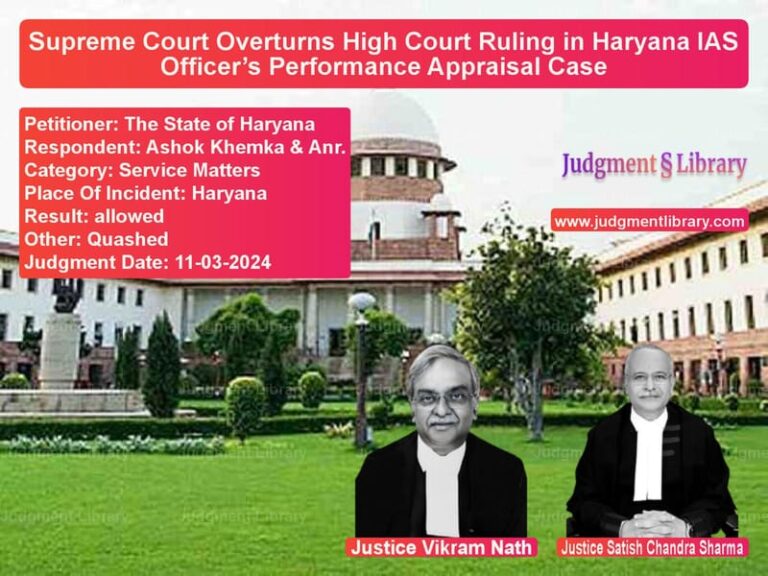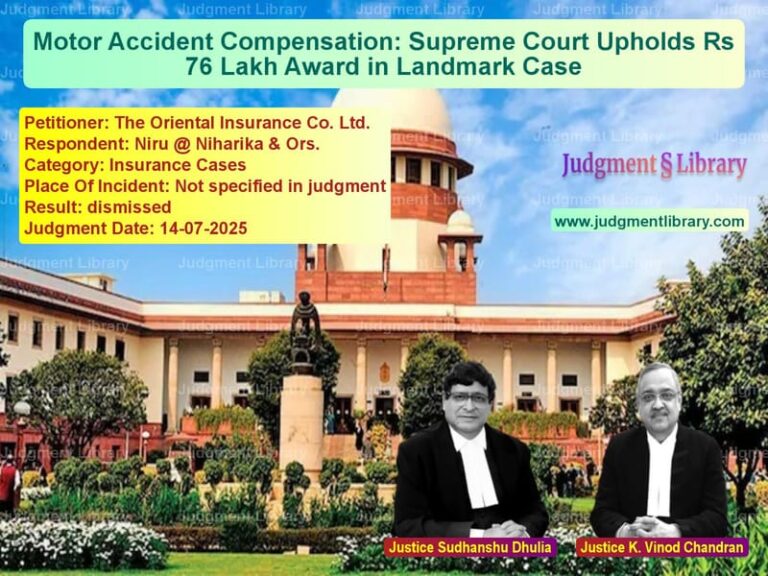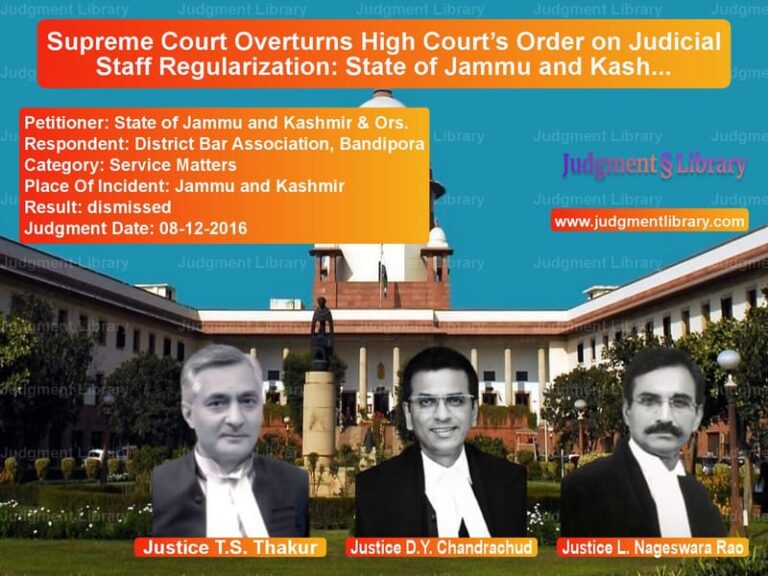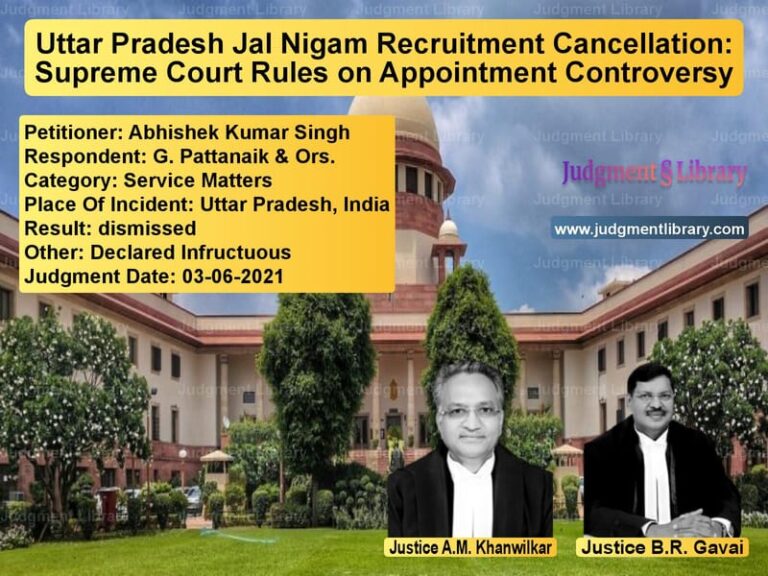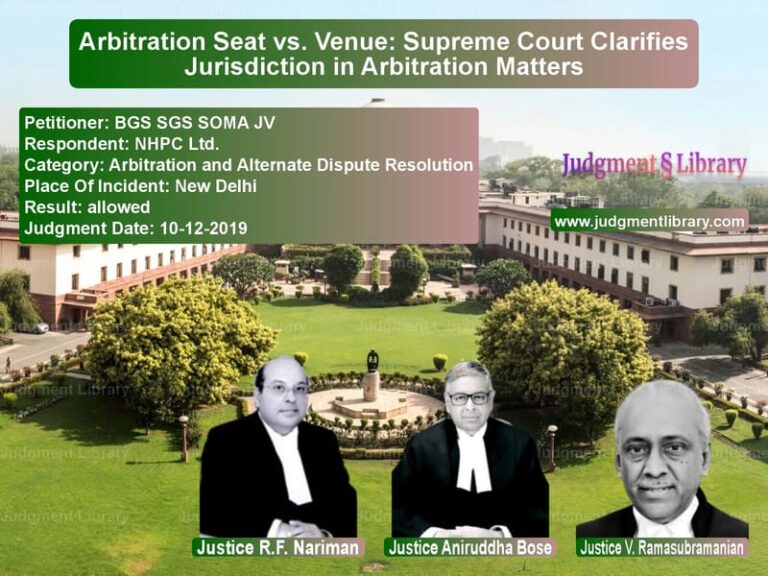Supreme Court Sends Monument Protection Law Challenge to Bombay High Court
The Supreme Court of India, in the case of Lunawat Construction Company vs. Union of India & Anr., has decided to transfer multiple writ petitions challenging the constitutional validity of The Ancient Monuments and Archaeological Sites and Remains (Amendment and Validation) Act, 2010, to the Bombay High Court for a detailed hearing. The Court ruled that having the matter initially adjudicated by the High Court would provide an additional layer of legal scrutiny before any potential review by the Supreme Court.
Background of the Case
The petitioner, Lunawat Construction Company, a partnership firm, challenged the constitutional validity of the 2010 Amendment to The Ancient Monuments and Archaeological Sites and Remains Act. The law was enacted to regulate construction and preservation activities around protected monuments and archaeological sites in India. The petitioner, along with others in connected cases, approached the Supreme Court under Article 32 of the Constitution, seeking to declare the amendments unconstitutional, citing violations of property rights and excessive restrictions on land use near protected monuments.
Additionally, a transferred case (T.C.(c) No.30 of 2010) and another writ petition (W.P.(c) No.36 of 2012) raised similar legal questions. Given the common nature of these cases, the Supreme Court decided to consolidate and send them for adjudication to the Bombay High Court.
Key Legal Issues Before the Supreme Court
- Whether the restrictions imposed by The Ancient Monuments and Archaeological Sites and Remains (Amendment and Validation) Act, 2010, were unconstitutional.
- Whether the petitioners’ property rights were being violated by the restrictions imposed around protected sites.
- Whether the matter should be decided directly by the Supreme Court or first heard by the Bombay High Court.
Arguments Before the Supreme Court
Petitioner’s (Lunawat Construction Company) Contentions:
- The petitioner argued that the amended law unfairly restricted their ability to develop property near protected monuments, thereby violating their fundamental rights.
- They contended that the law imposed blanket prohibitions without allowing case-by-case assessments of whether construction activities genuinely endangered archaeological sites.
- They asserted that the Supreme Court should directly hear and decide the case, given the constitutional nature of the challenge.
Respondent’s (Union of India) Counterarguments:
- The government defended the law, stating that the restrictions were necessary to preserve India’s historical and cultural heritage.
- They argued that similar laws exist worldwide and that protection of archaeological sites is a legitimate function of the state.
- The respondents contended that the High Court was the proper forum for first hearing the matter, as it involved issues of fact and law that required detailed adjudication.
Supreme Court’s Observations
The Supreme Court, in a judgment authored by Justice Abhay Manohar Sapre, made the following key observations:
- “No prejudice is likely to be caused to the parties if these writ petitions and the transferred case are sent to the High Court for their hearing on merits.”
- “Once the High Court renders its decision, this Court will have the benefit of the findings of the High Court, if occasion arises.”
- “In our view, it is just and proper to send these writ petitions and the transferred case to the High Court of Bombay for their disposal on merits in accordance with law.”
The Court emphasized that, given the technical and legal nature of the challenge, it was prudent for the Bombay High Court to hear the matter first, as it would allow for a more detailed factual and legal analysis before any potential appeal to the Supreme Court.
Final Judgment
The Supreme Court ruled:
- W.P.(c) No.96/2011, W.P.(c) No.36/2012, and T.C.(c) No.30/2010 were transferred to the Bombay High Court for adjudication on merits.
- The High Court was requested to decide the cases expeditiously.
- The petitions before the Supreme Court were disposed of accordingly.
Conclusion
This ruling clarifies that challenges to laws affecting property rights and historical preservation must undergo a detailed judicial review at the High Court level before reaching the Supreme Court. The decision ensures that complex factual and legal issues are examined thoroughly before the nation’s highest court intervenes. The judgment serves as an important precedent in cases involving the balance between property rights and heritage preservation.
Petitioner Name: Lunawat Construction Company.Respondent Name: Union of India & Anr..Judgment By: Justice Abhay Manohar Sapre, Justice Dinesh Maheshwari.Place Of Incident: Bombay, Maharashtra.Judgment Date: 16-04-2019.
Don’t miss out on the full details! Download the complete judgment in PDF format below and gain valuable insights instantly!
Download Judgment: Lunawat Construction vs Union of India & Anr Supreme Court of India Judgment Dated 16-04-2019.pdf
Direct Downlaod Judgment: Direct downlaod this Judgment
See all petitions in Fundamental Rights
See all petitions in Constitution Interpretation
See all petitions in Public Interest Litigation
See all petitions in Judgment by Abhay Manohar Sapre
See all petitions in Judgment by Dinesh Maheshwari
See all petitions in Remanded
See all petitions in Transferred
See all petitions in supreme court of India judgments April 2019
See all petitions in 2019 judgments
See all posts in Constitutional Cases Category
See all allowed petitions in Constitutional Cases Category
See all Dismissed petitions in Constitutional Cases Category
See all partially allowed petitions in Constitutional Cases Category


